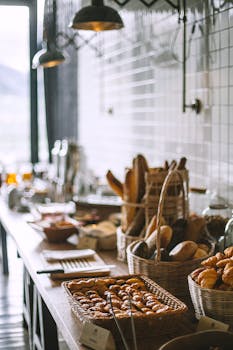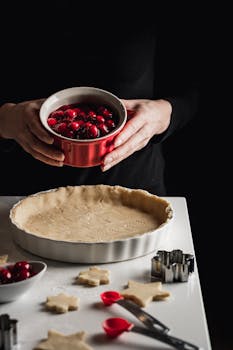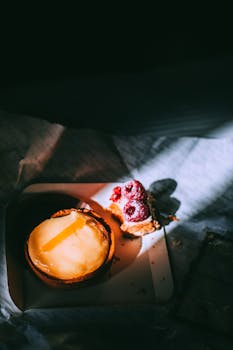Benefits
Convenience in Baking
Versatility in Use
Time-saving Preparation
Consistency in Results
Creative Freedom in Cooking
Get creative with 9 inch unbaked pie crust
Transforming it into a savory breakfast quiche by filling it with eggs, cheese, and your favorite vegetables or meats, turning your morning meal into a gourmet experience
Converting the crust into a decadent chocolate tart by filling it with a rich ganache and topping it with sea salt and caramel, offering an irresistible dessert option
Utilizing the pie crust for a rustic vegetable galette, filling it with seasonal vegetables, cheese, and herbs for a simple yet elegant vegetarian main or side dish
Crafting a cold fruit tart by baking the crust until golden and filling it with a cream cheese mixture, then topping it with fresh berries and glaze for a refreshing summer dessert
Repurposing the pie crust into mini appetizer cups, pressing small portions into muffin tins, baking until crisp, and filling with various ingredients like chicken salad, mushroom ragout, or pesto and tomato for bite-sized delights at any gathering
Something you can make with 9 inch unbaked pie crust
Origin
The concept of pie crust can be traced back to ancient times, with evidence of early pie-like dishes being made as early as the ancient Egyptians. However, the modern concept of a pie crust as we know it today originated in Europe during the Middle Ages. \n\nIn medieval Europe, pies were a popular dish, and the crust was used primarily as a vessel to hold the filling. The earliest pie crusts were simple mixtures of flour, water, and fat, such as lard or butter. These ingredients were combined to create a dough that could be rolled out and used as the base and top of a pie.\n\nOver time, different regions in Europe developed their own variations of pie crusts. In England, the traditional shortcrust pastry became popular, which is made using a higher proportion of fat to flour, resulting in a tender and crumbly crust. In France, the classic pâte brisée or \"broken dough\" was created, which is similar to shortcrust pastry


